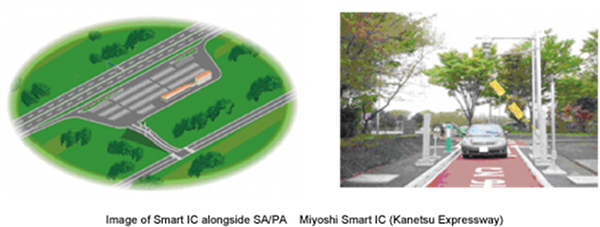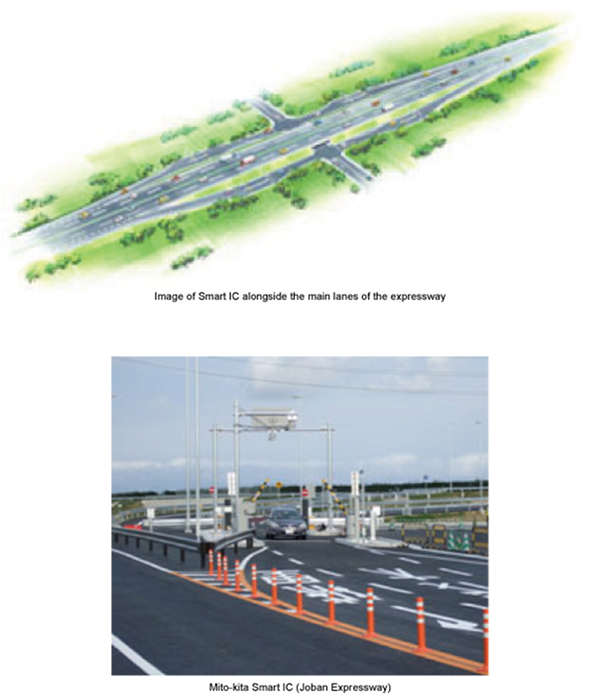Smart Interchange
Development of Smart Interchange
To utilize the existing expressways, provide better services for local users, and stimulate local economy, the MLIT is installing smart interchanges, which are exclusively for ETC-equipped vehicles and less expensive to construct and maintain.
What is "Smart Interchange"?
RSmart Interchange (IC) is installed at the main lanes, Service Areas, Parking Areas, bus stops of an expressway, and exclusively for ETC-equipped vehicles that can pay the toll through ETC. The ETC-only toll booth can be introduced at less cost, because this type of toll booth does not require full-spec one or ticket-collector.
Why was "Smart Interchange" introduced?
Average distance between interchanges in Japan is about 10 km, which is about twice as much as those in Europe and the U.S. This means there are many municipalities that are left out with no access or exit of expressway. To make expressways more accessible, optimization of interval of interchanges and enhancement of accessibility were proposed.
Types of "Smart Interchange"
1)Smart IC alongside SA/PA
This type of Smart IC is attached to Service Area/Parking Area which is connected to the main lanes of the expressway. It is relatively easy to add access route because the existing facilities are already connected to the main lanes of the expressway.

2)Smart IC alongside the main lanes of the expressway
This type of Smart IC is directly connected to the main lanes of the expressway. It can be added to the segment where there is no SA/PA.

Smart ICs in operation
There are 84* Smart ICs operated by 3 NEXCOs (East, Central, West) in Japan (as of May 31, 2016). Note: some Smart ICs have restrictions on accessible vehicle types or hours.
* includes 3 Smart ICs (Mito-kita, Miyoshi, Beppu-wan) that are planned to become full-spec ICs.
Locations of Smart ICs in operation (PDF)(Japanese version only)
NEXCO East (Japanese text only)
NEXCO Central(Japanese text only)
NEXCO West(Japanese text only)
